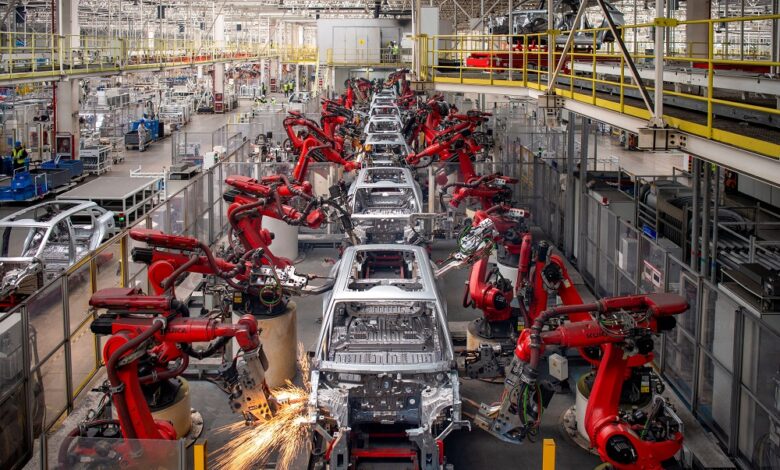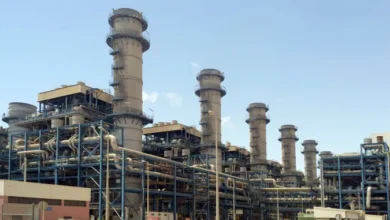
By Célestin Monga
Special to The Times Kuwait
After being disparaged and disdained for decades, industrial policy is back on the global economic agenda. Perhaps the strongest evidence of industrial policy’s rehabilitation is a recent international conference on rethinking structural transformation, cosponsored by the International Monetary Fund and attended by some of the world’s most influential economists.
Industrial policy is back in vogue for many reasons, including fears of deglobalization, the emergence of a multipolar world, supply-chain disruptions, the return of economic nationalism, and trade tensions (most notably between the United States and China, but also among Western countries). Governments in the United Kingdom, the United States, France, Vietnam, Brazil, and South Africa have all issued industrial-policy blueprints.
But despite renewed global interest in industrial policy, intellectual and policy elites remain confused about its precise meaning, its specific instruments, and how it differs from other economic policies. This is true of economists who advocate it, as well as those who disparage it.
In a famous 1791 report, the first US secretary of the Treasury, Alexander Hamilton, framed industrial policy as government measures to boost manufacturing and so-called ‘productive’ sectors. That definition has evolved and expanded over the past two centuries to reflect economic transformations and the need to think beyond manufacturing.
The term now encompasses all government interventions — from subsidies and tax incentives to public procurement and the design of intellectual-property protection — that explicitly target the transformation of the structure of economic activity in pursuit of some public goal. By that measure, industrial policies are those that are designated as selective and intentional. But these labels remain random, and the focus on policymakers’ stated intentions is risky: would anyone use public proclamations by politicians to measure democratic governments’ policies?
Recent IMF research has gone a step further, distinguishing between ‘vertical’ industrial policy favoring specific sectors — putatively a source of market distortions, state capture, and rent-seeking opportunities — and ‘horizontal’ economic policy focused on improving the business environment for all industries and firms. The horizontal approach is deemed fair, and even desirable.
But this new conventional wisdom reflects a misleading consensus on the proper scope of government intervention. Perhaps more importantly, the distinction between industrial and economic policy is fundamentally false. Drawing a line between ‘good’ (‘horizontal’ and ‘neutral’) and ‘bad’ (‘vertical’ and ‘targeted’) government intervention may be politically attractive, but does not hold water either conceptually or in practice.
Almost all items in a national budget could be classified as industrial policy because they implicitly or explicitly favor particular places, sectors, or businesses. The decision to build any type of productive infrastructure in a specific location always provides (unfair) advantages to certain regions or firms.
Moreover, the macro-financial policies often presented as the antithesis of industrial policy are, in fact, not wholly neutral. For example, exchange-rate measures favor some sectors and industries more than others. Likewise, financial-sector regulation, often portrayed as the most ‘neutral’ and ‘horizontal’ government policy, shapes an economy’s sectoral allocation.
The benefits that accrue to some industries and firms are not always obvious. The US banking sector is a case in point: the Federal Reserve (a branch of the government) lends money to banks at an interest rate of 1 percent, which the banks then use to buy Treasury bills (from the same government) yielding roughly 4 percent. This represents about $30 billion in subsidies per year, more than any developing country would ever grant to one industry.
Social safety nets to mitigate poverty and progressive income taxes to reduce inequality also affect the economic structure, because they imply winners and losers, often in specific geographic areas or social groups. The World Bank’s public-expenditure reviews and benefit-incidence analyses often capture important distributional issues regarding who benefits from this type of spending.
On a more fundamental level, policies always have indirect effects. For example, in countries with limited fiscal space, well-meaning social programs presented as neutral cross-cutting projects — not intended to favor particular industries or regions — can still change the economy’s structure if they cause public-debt levels to rise and pose risks to financial stability, which would disproportionately harm certain sectors and groups.
Given this, it is delusional to think that the effects of ‘vertical’ industrial policy can be detached from those of broad macroeconomic or regulatory policies and studied in isolation. Both types of policies always have economy-wide repercussions, whether direct and observable effects on other sectors or industries, or indirect opportunity costs for various economic agents.
Attempts to disentangle these outcomes will almost always result in noise, not signal. Empirical studies using tariffs and quotas to assess the effectiveness of industrial policy in any given country often fail to consider that such measures help generate additional fiscal revenue and achieve terms-of-trade gains, in addition to protecting non-competitive or infant domestic industries.
Almost all economic policy aims to improve the economy’s structure or to achieve a social goal, and requires the use of instruments that will directly or indirectly favor some industries, sectors, or firms. The controversy over industrial policy is largely a matter of semantics: governments implement these banal strategies of economic transformation on a daily basis.
Just as Monsieur Jourdain in Molière’s The Bourgeois Gentleman discovers that he has been speaking prose all his life without realizing it, economists should finally acknowledge that almost all economic policy is, in fact, industrial policy. The question, then, is not whether to use it, but rather how to do so transparently and well.

Célestin Monga
A former managing director at the United Nations Industrial Development Organization, he is the former vice president and chief economist at the African Development Bank, and a former senior economic adviser at the World Bank, and teaches public policy and economics at Harvard Kennedy School.
Copyright: Project Syndicate, 2024.
www.project-syndicate.org













